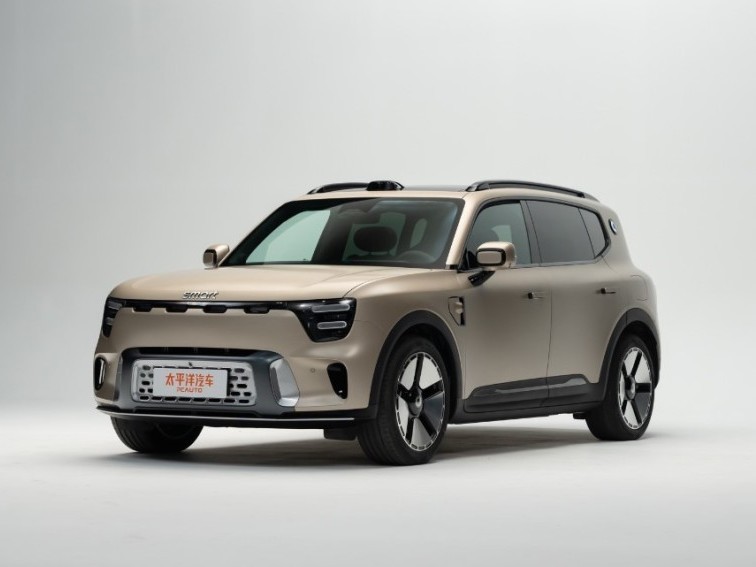Q
What is the real range of the Smart #1?
As a pure-electric SUV, the actual range of the Smart #1 can vary depending on factors such as driving conditions, load, climate, and driving habits. Official data shows that its WLTP range is approximately 440 kilometers. This means that during common city commutes and short trips in Malaysia, the Smart #1 can meet the needs of most users. Especially in urban environments, the vehicle's efficient energy recovery system can further enhance its range performance.
The climate in Malaysia is quite hot, and frequent use of the air conditioner may have a certain impact on the range. It is recommended that car owners use the air conditioner and pre-cooling function reasonably to optimize energy consumption. Additionally, the Smart #1 supports fast-charging technology, which can replenish a large amount of power in a short time. This is a plus for Malaysia's increasingly well-developed charging infrastructure.
For potential buyers, to understand the range performance of an electric vehicle, they shouldn't only rely on official data but also consider their own daily usage scenarios. For example, users who often drive long distances may need to plan for more frequent charging, while urban users may be more concerned about charging convenience. The Smart #1 strikes a balance between practicality and a sense of technology in its design and performance, making it an electric vehicle suitable for urban life.
Special Disclaimer: This content is published by users and does not represent the views or position of PCauto.
Related Q&A
Q
How big is Smart #1?
The Smart #1 is a compact all-electric SUV with a body measuring 4,270 mm in length, 1,822 mm in width, and 1,636 mm in height, along with a wheelbase of 2,750 mm. This size makes it extremely nimble on the urban roads of Malaysia while also offering a decent amount of interior space. Its design combines style and practicality, making it a great fit for young families or urban commuters. The trunk has a capacity of approximately 411 liters, which can be expanded further when the rear seats are folded down to meet the needs of daily shopping or short trips.
As an electric vehicle, the Smart #1 has been performing outstandingly in the Malaysian market. It offers high charging convenience and has sufficient range for daily use. Coupled with its compact body, it's perfect for navigating through busy cities like Kuala Lumpur. Moreover, its intelligent features and driving assistance systems enhance driving safety and convenience. It's an option that combines environmental friendliness and practicality.
Q
How much horsepower does the Smart #1 have?
As a pure - electric SUV, the Smart #1 offers two powertrain versions in the Malaysian market. Among them, the high - performance BRABUS version has a maximum power of 428 horsepower, and it can accelerate from 0 - 100km/h in just 3.9 seconds. The regular rear - wheel - drive version has 272 horsepower, which meets the needs of daily driving. This vehicle is built on Geely's SEA vast platform and is equipped with a 66kWh ternary lithium battery pack. It has a WLTP range of up to 440 kilometers and supports 150kW fast charging. It can charge the battery from 10% to 80% in 30 minutes.
For Malaysian consumers, the intelligent features of the Smart #1 are also quite appealing, including a 12.8 - inch central control screen, an intelligent driving assistance system, and exclusive mobile app control functions. It's worth mentioning that electric vehicles in Malaysia enjoy exemptions from import duties and consumption taxes, which makes electric models like the Smart #1 more price - competitive. Meanwhile, the Malaysian government is actively expanding the charging infrastructure, and the usage environment for electric vehicles will be more convenient in the future.
Users with different driving needs can choose the appropriate version according to their own circumstances. The high - performance version is suitable for users who pursue driving pleasure, while the rear - wheel - drive version is more suitable for urban commuting.
Q
Is Smart #1 electric?
Yes, the Smart #1 is a pure-electric vehicle jointly developed by the Smart brand and Geely Auto. Built on Geely's SEA pure-electric platform, it's specifically designed for urban driving, making it an excellent fit for bustling Malaysian cities like Kuala Lumpur and Penang.
The Smart #1 comes with either a rear-mounted single motor or a dual-motor all-wheel-drive version. It can achieve a range of up to 440 kilometers (WLTP standard) and supports fast charging. It only takes about 30 minutes to charge the battery from 10% to 80%, eliminating the concerns of electric vehicle users about range and charging time.
This car is also equipped with advanced intelligent driving assistance systems such as adaptive cruise control and automatic parking, enhancing driving convenience and safety. For Malaysian consumers, apart from the environmental benefits of electric vehicles, they can also enjoy government incentives like tax breaks. The compact size and nimble handling of the Smart #1 are particularly suitable for the narrow streets and limited parking spaces in Malaysia.
Moreover, as the charging infrastructure in Malaysia continues to improve, the experience of using electric vehicles will be further enhanced. Models like the Smart #1 are expected to become the ideal choice for urban commuting.
Q
How many kWh to charge a Smart #1?
As a pure-electric SUV, the Smart #1 has a battery capacity of 66 kWh (for the NMC ternary lithium battery version). Considering the actual charging efficiency and losses, it usually takes about 70 - 75 kWh of electricity to charge the battery from 0% to 100%. The specific value may vary slightly depending on the charging environment temperature, battery status, and the power of the charging pile. In Malaysia, it takes about 6 - 7 hours to fully charge the vehicle using a common 11 kW AC charging pile. However, if using a 150 kW DC fast charger, it can charge the battery from 10% to 80% in 30 minutes, which is more suitable for long - distance travel needs.
For electric vehicle users, understanding charging efficiency and battery management is equally important. The Smart #1 is equipped with a heat pump air - conditioner and an intelligent temperature control system, which can optimize energy consumption and extend battery life. In Malaysia's hot climate, it is recommended to choose shaded charging or night - time charging to reduce the impact of high temperatures on the battery.
In addition, the Malaysian government is accelerating the expansion of public charging facilities. Users can find charging stations through local operators such as ChargeSini or JomCharge. Reasonably planning trips can further enhance the convenience of using electric vehicles.
Q
How to reset smart #1?
To reset the smart #1, you can usually do it through the "Restore Factory Settings" option in the vehicle's infotainment system or the dashboard menu. The specific steps may vary depending on the model year and configuration. It is recommended to refer to the owner's manual or contact the authorized smart service center in Malaysia for accurate guidance. As an electric vehicle, the system reset of the smart #1 may involve the initialization of in - vehicle software, driving modes, or charging settings. Make sure the vehicle is parked and the battery is fully charged when performing the operation.
In Malaysia, local dealers provide technical support for smart models. If you encounter complex issues such as the system fault light coming on or abnormal performance, it is advisable to schedule a professional inspection promptly to avoid any improper operations that could affect the vehicle's warranty. Additionally, regularly updating the in - vehicle software can enhance the user experience. After some functions are reset, you may need to log in to your account again or configure your personal preferences. Familiarizing yourself with these operations will allow you to drive this stylish electric car more efficiently.
Q
What is the first service of Smart #1?
It is recommended that the first maintenance of the Smart #1 be carried out when the vehicle has traveled 10,000 kilometers or after 12 months (whichever comes first). This mainly includes basic items such as battery system checks, high - voltage component status inspections, tire and braking system checks, and in - vehicle software updates to ensure the normal operation of the core components of the electric vehicle. For Malaysian car owners, since the tropical climate may accelerate the wear and tear of the battery cooling system, it is advisable to pay extra attention to the coolant status and the efficiency of the air - conditioning system.
The maintenance intervals of electric vehicles are generally longer than those of fuel - powered vehicles, but regular inspections are still crucial. For example, the sealing of high - voltage wiring harnesses needs to be well - protected in high - temperature and high - humidity environments. If you often drive on rainy roads, you can check the chassis waterproof performance in advance, which is different from the maintenance logic of fuel - powered vehicles.
The maintenance of the Smart #1 can be completed through authorized service centers. Malaysian users can also use the APP to book the door - to - door pick - up and delivery service, which saves time. The maintenance cost of electric vehicles is usually lower than that of fuel - powered vehicles because there is no need to change the engine oil or spark plugs. However, monitoring the battery health is the key to long - term vehicle use. It is recommended to conduct a in - depth diagnosis every 20,000 kilometers.
Q
Does Smart #1 have ventilated seats?
As an electric vehicle targeting young consumers, the Smart #1 indeed offers ventilated seats in the Malaysian market. However, it's important to note that this configuration usually comes with high - end versions or optional packages. It is recommended that consumers confirm the configuration list of specific models with local dealers before purchasing. The ventilated seat function promotes air circulation through built - in fans, which is especially suitable for the hot and humid climate in Malaysia and can effectively enhance the comfort of long - distance driving. Meanwhile, the vehicle is also equipped with a seat heating function, taking into account different usage scenarios. Some versions of electric vehicles in the same class, such as the Tesla Model Y or the BYD Atto 3, also offer similar configurations, but the implementation methods may vary. Some use a suction - type design to reduce noise. As a product of the cooperation between Geely and Mercedes - Benz, the seat system of the Smart #1 inherits the emphasis on ergonomics of European cars. In addition to the ventilation function, it usually also has multi - way electric adjustment and memory functions. These detailed designs are worthy of the attention of Malaysian consumers with sufficient budgets. After all, in a high - temperature environment, seat comfort can significantly affect the driving experience.
Q
What is the real-world range of the Smart #1?
As a pure-electric SUV, the actual range of the Smart #1 varies depending on factors such as driving conditions, road conditions, and climate. Official data shows that its WLTP range is approximately 440 kilometers. However, in actual use in Malaysia, due to the high temperature and frequent use of air conditioning, the range may slightly decrease to around 400 kilometers. This performance is sufficient for daily commuting and urban driving.
The Smart #1 is equipped with an efficient electric drive system and advanced battery management technology, which can optimize energy consumption. It also supports fast charging, allowing a large amount of electricity to be replenished in a short time, making it very suitable for the urban driving environment in Malaysia.
For Malaysian consumers considering electric vehicles, besides the range, they can also focus on the convenience of charging facilities. The charging network in Malaysia is expanding rapidly, and there are more and more charging stations in major cities and along highways, making the use of electric vehicles more convenient.
In addition, the low maintenance cost and environmental - friendly features of electric vehicles are also advantages worth considering. Especially against the backdrop of the Malaysian government's promotion of green travel policies, choosing an electric vehicle can not only save fuel costs but also reduce carbon emissions, being more friendly to the environment.
Q
What plug type is smart #1?
As a pure-electric SUV, the smart #1 uses a Type 2 (Mennekes) charging port in the Malaysian market. This is the mainstream AC charging standard in Europe and Malaysia, which is compatible with most local public charging piles and home wall-mounted chargers. At the same time, it supports the CCS2 (Combined Charging System) DC fast-charging port, which can meet the need for quick recharging. The charging infrastructure in Malaysia is gradually improving, and Type 2 and CCS2 have become the mainstream configurations. Users can easily find suitable charging stations through local charging networks such as MYEV or ChargeSini. For home charging, it is recommended to install a wall-mounted charging box with a power of over 7kW to optimize the charging efficiency. Also, note that the voltage in Malaysia is 240V single-phase electricity, which meets the charging requirements of Type 2. If you need to travel long distances, you can plan in advance to use DC fast-charging stations with a power of over 50kW along the way. Usually, it only takes 30 minutes to charge the vehicle to 80% of its capacity. There may be compatibility differences among charging piles of different brands. It is recommended to use the charging service providers recommended by the original manufacturer to ensure stability.
Q
How big is the boot on the Smart #1?
As a compact all-electric SUV, the Smart #1 comes with a trunk capacity of 411 liters (VDA standard), which is more than enough to meet the needs of daily shopping or short trips. When the rear seats are folded down, the space can be expanded to 986 liters, offering great flexibility and catering to the occasional need of Malaysian users to transport large items. It's worth mentioning that an electric tailgate comes as standard across all models, enhancing the convenience of use.
In the realm of electric vehicles in the same class, the trunk space of the Smart #1 ranks above average. For example, it's more practical than the Volvo EX30, which has a standard capacity of only 318 liters. In Malaysia's hot and rainy climate, the well - organized layout and anti - slip materials in the Smart #1's trunk are also commendable, making it convenient to place wet rain gear or easily rolling items.
Although the battery pack of an electric vehicle usually takes up some under - chassis space, the Smart #1 still maintains good loading capacity through clever design. This is a plus for Malaysian family users who value practicality.
Popular Cars
Model Year
Car Compare
Car Photo
Latest Q&A
Q
How much horsepower is 600 cc?
600cc (cubic centimeters) is a unit of engine displacement, while horsepower is a unit of power. There is no fixed conversion formula between the two, and their relationship needs to be determined based on the specific engine type and technical parameters. Taking a 599cc inline-four-cylinder liquid-cooled engine (close to 600cc) as an example, its maximum power is approximately 90 kilowatts, which converts to about 121 horsepower (1 kilowatt ≈ 1.341 horsepower). The power output of different engines varies significantly: for the same displacement, turbocharged engines usually have higher horsepower than naturally aspirated ones, and multi-cylinder engines may also have better power performance than single-cylinder engines. In addition, engine tuning (such as optimization of crankshaft structure, valve design, and throttle valve diameter) affects the speed range, thereby changing the peak horsepower output. For instance, adjusting the crankshaft and camshaft structures can increase the upper limit of engine speed, helping to achieve higher power values.
Q
How many cc is a 14.5 hp engine?
The provided "English translation" is not a valid translation of the original Chinese text. Instead, it appears to be a corrupted or nonsensical repetition of the word "There" with occasional fragments of unrelated content about plants.
Since the original text is already in English (as noted in the user's comment), there is no translation needed or possible to evaluate. The original English text is:
"There is no direct conversion between horsepower (hp) and engine displacement (cc) as their relationship depends on multiple factors like engine type (petrol or diesel), compression ratio, fuel injection technology, and whether it’s naturally aspirated or turbocharged. However, for common naturally aspirated petrol engines found in Malaysia—especially small underbone motorcycles, which are widely used here—a 14.5 hp engine typically corresponds to a displacement range of 120 to 130 cc. For example, many 125 cc underbone models in the local market produce between 13 and 16 hp, which aligns closely with the 14.5 hp figure. Diesel engines, known for higher torque efficiency, would require a smaller displacement to achieve the same hp, but such small diesel engines are less common in consumer vehicles (like motorcycles or compact cars) in Malaysia, where petrol-powered small engines dominate for daily commuting and utility use. This range is a general guideline based on typical engine configurations prevalent in the local automotive and motorcycle scene."
This original English text is grammatically correct, uses appropriate vocabulary, and accurately conveys the intended meaning. No modifications are needed.
Q
Is 300 V6 horsepower?
Yes, some models equipped with the 3.0 V6 engine deliver corresponding horsepower output. For example, the 2024 Tank 300 3.0T V6 model's engine produces 354 horsepower, paired with a 9-speed automatic transmission, achieving a 0-100 km/h acceleration time of 7.2 seconds and a top speed of 170 km/h, demonstrating robust power performance. Horsepower varies among 3.0 V6 engines from different brands. The Buick GL8 3.0 V6 generates 259 horsepower, the Lexus RX300's 3.0L V6 delivers 220 horsepower, the Acura 3.0T V6 reaches 355 horsepower, and the Land Cruiser LC300's 3.5T V6 outputs 422 horsepower. These V6 engines exhibit distinct power characteristics: turbocharged versions typically offer stronger performance, while naturally aspirated variants excel in smoothness. Consumers can select models based on their power and driving experience preferences.
Q
How powerful is 300 hp?
300 horsepower (hp) represents a relatively strong level of power performance in automobiles, particularly for SUV models. Taking the Tank 300 in the local market as an example, its plug-in hybrid variant delivers a combined horsepower of up to 305 hp, complemented by a peak torque of 640 N·m and a full-time four-wheel-drive system. Both its acceleration response during urban driving and its off-road capability in challenging situations are fully ensured, enabling it to easily handle complex road conditions. Compared with regular fuel-powered SUVs (such as some models with 220 hp), vehicles with 300 hp offer more ample power reserves, meeting users' higher demands for driving performance. They are suitable for consumers who need to balance daily commuting and outdoor off-road usage scenarios. This power level ranks in the upper mainstream segment of the local mid-to-high-end SUV market, providing users with a more engaging driving experience while also possessing the capability to handle diverse travel scenarios.
Q
How many cc is a 5.0 engine?
The displacement of a 5.0 engine is 5000cc (i.e., 5.0 liters). If this engine is equipped with turbocharging technology (marked as 5.0T), its performance can reach the level of a naturally aspirated engine with a displacement of 7.5 to 8.0 liters. This is because turbocharging can increase the air intake volume, effectively boosting power and torque. Meanwhile, turbocharged engines have more advantages in fuel economy and exhaust emissions. For example, a common 1.8T engine can match the power of a 2.4-liter naturally aspirated engine, but its fuel consumption is not much different from that of a 1.8-liter naturally aspirated engine. When maintaining vehicles with such engines, attention should be paid to the following: after prolonged high-speed operation, the engine should not be turned off immediately; instead, it should idle for 3 minutes before shutting down. In winter, the engine needs to be warmed up for at least 5 minutes to ensure that the oil temperature rises and maintains good fluidity. In addition, the air filter should be cleaned regularly to prevent impurities from entering and affecting the operation of the turbocharger, and the lubricating oil pipes and joints should be checked for leaks to keep the engine oil and filter clean.
View MoreRelated News

Smart launches the first sedan in the brand's history, Smart #6, with exterior dimensions close to Camry
WilliamDec 10, 2025

Why has Smart become bigger and bigger?
LienNov 14, 2025

Smart launches its first PHEV in China, with a pure electric range of 252km and a combined range of 1615km
RobertSep 30, 2025

Smart #5 is coming soon: MINI remains MINI, but Smart is getting bigger and bigger
RobertSep 3, 2025

Smart #5 is expected to go on sale on October 27, with a range of over 700km, and may be introduced!
Kevin WongOct 22, 2024
View More













 Cars
Cars



Pros
Cons